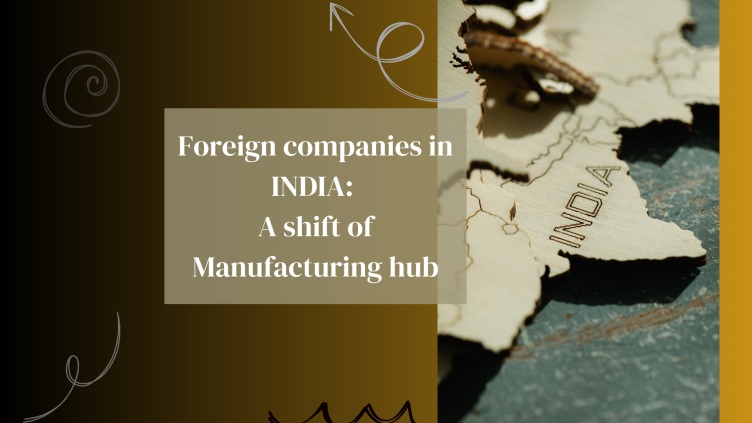Foreign companies in India- a shift of manufacturing hub?
India is the world’s ninth-largest economy, with $2.3 trillion in GDP, and the third-largest by purchasing power parity, with $8 trillion. Nevertheless, manufacturing contributes only 16% of the country’s GDP, while the services sector accounts for roughly 52%. India accounts for only 2% of global industrial output or one-tenth of what its neighbour China generates.
India does boast a few shining instances of world-class manufacturing prowess and well-established core industries such as textiles, auto components, and, more recently, petrochemicals. For example, Bharat Forge’s Mundhwa facility, the world’s largest forging mill, is a cutting-edge complex that has put India on the industrial map. The corporation possesses all required characteristics, including significant investment in technology, scientifically qualified personnel, and a strong emphasis on lean production.
India still has issues like tariffs, antiquated labour laws, frail policy frameworks, and regulatory uncertainties exacerbated unfavorable economic circumstances and concerns like purchasing land with clear titles free of bribery and conflict. Land and project permissions are frequently held up for months. The availability of affordable and reliable power is frequently a problem. The manufacturing labour in India is still labour-intensive. Using non-standard automation and relying on manpower generally results in more labour-related difficulties, a larger percentage of the non-value-added time, poor plant-floor ergonomics, more health, safety, and environmental issues, and worse quality standards. But it won’t take much time for the policy framework and ecosystem to evolve and provide the manufacturing sector at-par or even better facilities and policies which will attract them to shift their manufacturing base to India.
These issues must be met efficiently, and some companies in India have begun to rebuild their production processes. The present government is providing incentives and production-linked incentive (PLI) initiatives to entice more multinational corporations to establish manufacturing bases in India. The government has committed to allocating Rs1.97 lakh crore to 13 industries, including pharmaceutical, mobile, and electronic component manufacturing, over five years under the recently PLI plan. Manufacturers have recognized intelligent technologies’ potential and begun to incorporate them into nearly every level of the value chain. Emerging technologies like the Internet of Things (IoT) are being implemented to help the supply chain work smoothly. Machine Learning, Artificial Intelligence (AI), and Automation approaches are paving the way for the transformation of industrial operations, ushering the Indian manufacturing industry into a bright and sophisticated future.
The manufacturing industry in India has been weak, with little development due to several fundamental challenges. But it can’t be said that India has lost its allure for MNCs. Even though several firms have cut back development plans and new investments due to poor business confidence and dismal consumption, other international corporations have lined up ambitious initiatives in India.
India is a popular destination for international manufacturing companies. Several enterprises, including those in the electronics, luxury, vehicle, and gadget sectors, have established or aim to establish themselves in the country. While it is not yet a significant manufacturing centre, India is on the right track. With the help of all stakeholders, India will soon be at the top of the global manufacturing league. A thorough reform of the Indian industrial sector is required to remove these impediments and move forward in the race.


